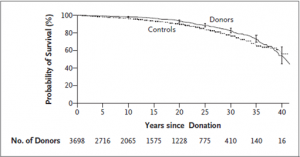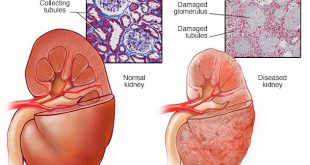Introduction
Kidney transplantation is the treatment of choice for end-stage kidney disease. The problem is shortage of donated organs and a growing wait list for transplantation. In 2014, there were 34,767 patients on dialysis in Malaysia and the number of new transplant patient for 2014 was 81 only.
What is the advantage of living donors?
- Shorter waiting time for dialysis patients compared to waiting for a deceased donor.
- Short and long term survival rates are significantly better for transplants from living donors than transplants from deceased donors.
- Living donor kidneys almost always start functioning immediately, whereas deceased donor kidneys can take from a few days to a few weeks to start functioning.
What is the risk of kidney donation?
Kidney donor operation is a major surgical procedure, donors find they have less energy and need about 4-6 weeks to return to their full pre-surgical activity level. For donors who work in an office they can usually return to work in 2 – 3 weeks. For those whose work includes some physical labor, it can take 4-6 weeks before they can return to work. Female donors can get pregnant after donation of a kidney.
Death associated with surgery from live kidney donation was 3.1 per 10 000 donors in a study in US from 1994-2009. The long-term risk of death was no higher for live donors compared with a healthy matched cohort.
Risk associated with surgery
- Pain and numbness at operation site
- Post-operative infection example urinary tract infection and respiratory tract infection
- Bleeding during or after operation and the need for blood transfusion
- Deep vein thrombosis post-operative
- Complication of general anaesthesia
- Development of hernia
Long-term renal consequences of kidney donation
Based on a study from University of Minnesota in the US, 3698 kidney donors who donated kidneys during the period from 1963 through 2007 were recruited. These are the results:
- Survival of donors
- Development of kidney failure
- Prevalence of hypertension and diabetes mellitus
- Quality of life
The survival of kidney donors was similar to that of controls that were matched for age, sex, and race or ethnic group.

In this study, eleven donors develop end-stage renal failure, a rate of 180 cases per million persons per year, as compared with a rate of 268 per million per year in the general population. After donating one kidney (removing 50 percent of the functioning kidney mass), the remaining normal kidney compensates and the overall kidney function (measured in GFR, or glomerular filtration rate) increases to approximately 70 percent of baseline at about two weeks and approximately 75 to 85 percent of baseline at long-term follow-up. So there is no increased rate of developing end-stage renal failure. The rate of change in the glomerular filtration rate (GFR) did not appear to accelerate over time.
The prevalence of hypertension and albuminuria (protein in the urine) in kidney donors were similar to those in controls who were matched for age, sex, race or ethnic group, and body-mass index, even two decades after donation. There was no significant difference in the prevalence of diabetes, use of anti-hypertensive medications, or cancer between the donors and the controls. Donors’ current health seems to be similar to that of the general population.
Quality of life appears to be excellent. These outcomes may be a direct consequence of the routine screening of donors for important health conditions related to kidney disease at the time of donation.
Summary
Survival and the risk of end-stage kidney disease in kidney donors appear to be similar to those in the general population. Most donors had a preserved renal function, normal albumin excretion, and an excellent quality of life.
References
- 19th Report of the Malaysian Dialysis and Transplant Registry 2011
- Brochure publish by Unit Perkhidmatan Transplan Bahagian Perkembangan Perubatan, Kementerian Kesihatan Malaysia.
- Renal Replacement Therapy Clinical Practice Guideline (MOH) 3rd Edition
- Living Kidney Donor Network Website
- ‘Perioperative Mortality and Long term Survival Following Live Kidney donation’ in Journal of American Medical Association Vol 303 No 10 Mac 10, 2010
- Long-Term Consequences of Kidney Donation, N Engl J Med 2009;360: 459-69.
| Last Reviewed | : | 24 June 2016 |
| Writer | : | Dr. Shahnaz Shah Firdaus Khan |
| Accreditor | : | Dr. Wong Hin Seng |
 PENDIDIKAN PESAKIT Kementerian Kesihatan Malaysia
PENDIDIKAN PESAKIT Kementerian Kesihatan Malaysia
